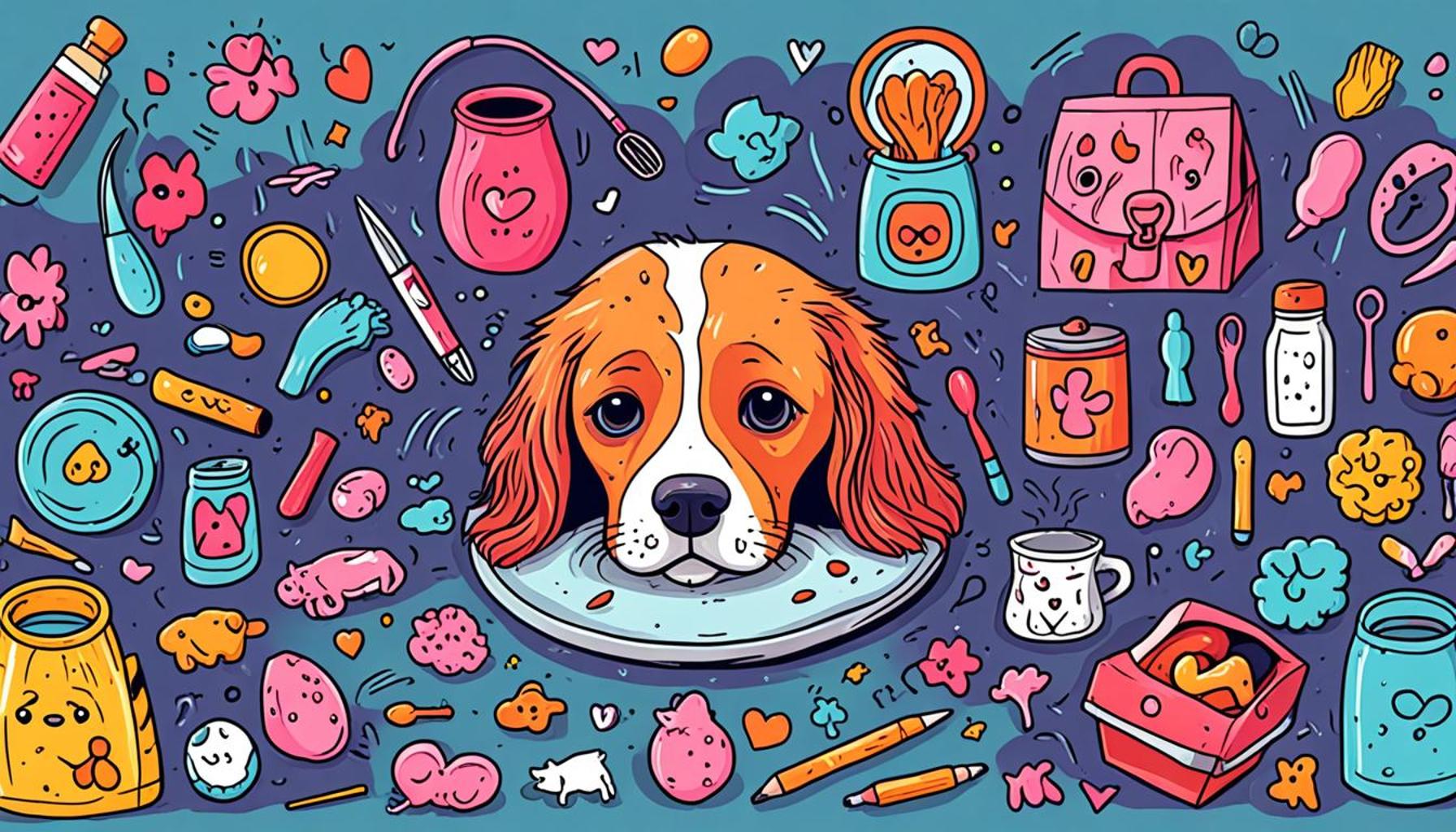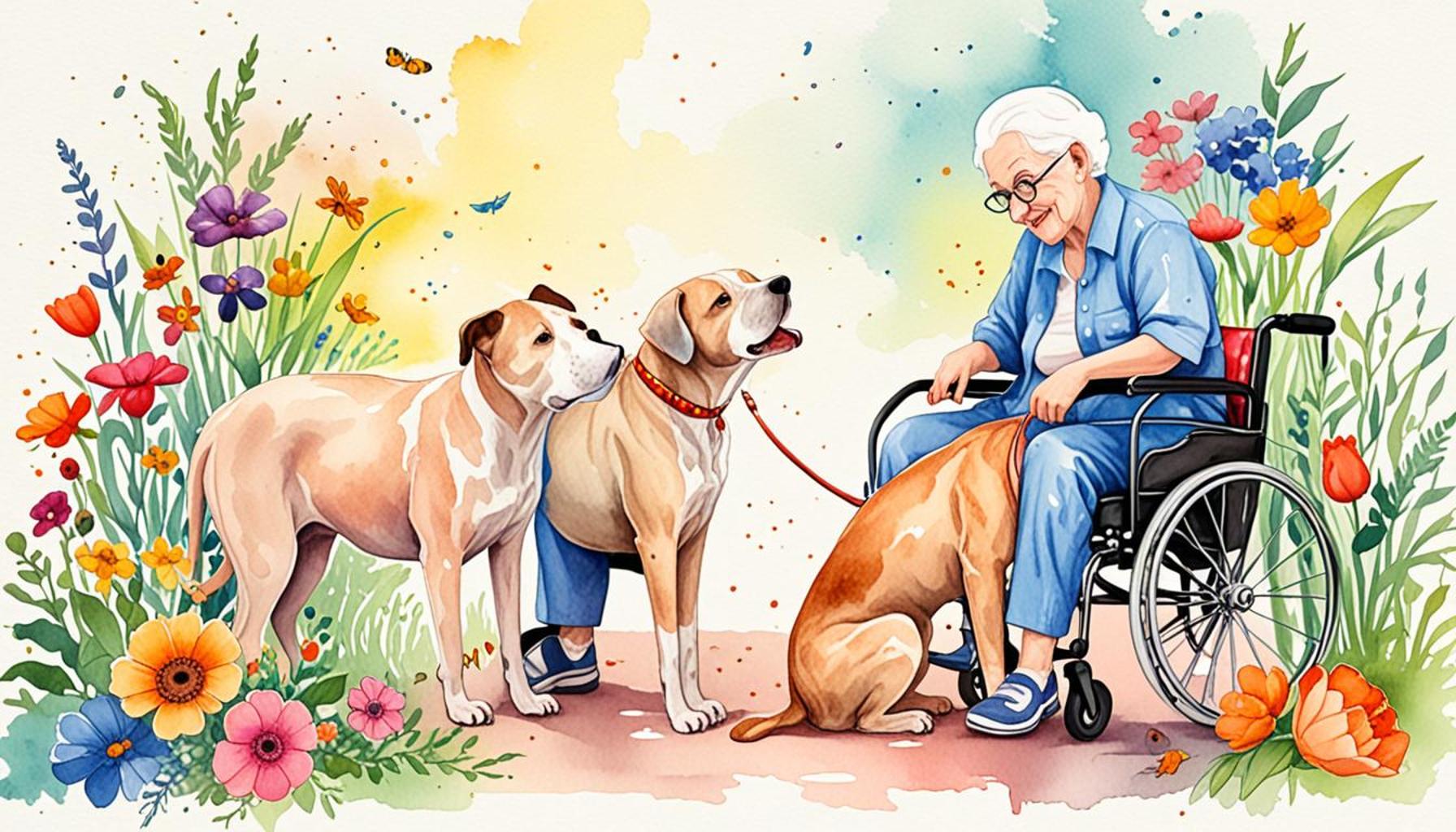How to Identify Signs of Depression in Companion Animals

Recognizing the Unseen Struggles
Pets are more than just furry companions; they are cherished members of our families. When a pet shows signs of distress, it is crucial to understand that they might be experiencing something deeper, such as depression. The challenge lies in identifying these signs, which can often be subtle and easily overlooked, yet they can significantly influence a pet’s quality of life.
Companion animals, including dogs and cats, can display a range of behaviors that may signal depression or emotional distress. Understanding these indicators is essential for any pet owner. Here are some key behaviors to watch for:
- Changes in Appetite: A drop in food intake or sudden overeating can be a red flag. For example, if your normally ravenous Labrador suddenly snubs its food, or if your finicky cat starts devouring snacks with voraciousness, this shift may indicate underlying emotional issues.
- Withdrawal: If your pet is isolating themselves more than usual, it may indicate emotional distress. Dogs that usually seek human interaction may retreat to a corner, and cats that love to lounge in your lap may suddenly prefer confinement to their favorite hiding spots.
- Loss of Interest: Changes in playfulness or a lack of enthusiasm for favorite activities can signal a problem. Take note if your dog stops fetching a toy they used to love or if your cat loses interest in climbing their cat tree.
- Excessive Sleeping: Spending more time sleeping than usual may suggest that something is wrong. While cats are often known for their napping habits, a sudden increase in sleep duration in an otherwise active cat or dog warrants attention.
Understanding these warning signs is vital for pet owners in the United States, where an estimated 20% of dogs and cats may experience behavioral issues at some point in their lives. As the bond between humans and pets continues to grow stronger, recognizing these behavioral changes becomes a cornerstone of responsible pet ownership. By being vigilant and informed, you can promote a healthier, happier life for your beloved pets.
Identifying and addressing depression early can lead to better outcomes for their emotional and physical well-being. Engaging with veterinarians and animal behaviorists can provide guidance and advice tailored to your pet’s specific situation. Regular vet check-ups not only monitor health but can also detect any early signs of distress, thereby enhancing the likelihood of a timely intervention when necessary.

Taking time to observe your pet’s behavior can open pathways to understanding their mental state. Simple interventions, like increased exercise, enriched playtime, or even exploring pet therapy, might profoundly alter a pet’s emotional landscape. In the world of animal companionship, staying informed and proactive about their mental health is just as important as catering to their physical needs.
SEE ALSO: Click here to read another article
Everyday Indicators of Emotional Turmoil
Identifying signs of depression in companion animals, such as dogs and cats, can be a daunting task for even the most observant pet owner. Unlike humans, pets cannot articulate their feelings, making it imperative for owners to be attuned to behavioral changes that may signal emotional distress. Recognizing these signs early is crucial, as it can enable timely intervention to enhance their quality of life.
One of the most striking indicators of depression in pets is the alteration in routine. Animals, much like humans, thrive on predictable schedules. When a pet suddenly exhibits a deviation from their normal behaviors, it can be a cause for concern. For example, if your dog who normally begs for morning walks suddenly shuns the leash, or if your cat skips their evening playtime, these behavioral shifts should raise a red flag.
Additionally, many pets experience significant changes in their vocalization patterns. A previously vocal dog that becomes unusually quiet, or a cat that meows incessantly without apparent cause, may be expressing deeper emotional difficulties. This behavioral alteration can reflect feelings of anxiety, sadness, or loneliness.
Furthermore, aggression or irritability can also indicate underlying depression in pets. While a generally docile dog may become snappy, or a previously gentle cat may swat at people or other pets, these dramatic behavioral shifts highlight the emotional struggles your pet may be facing. It’s essential to observe these changes closely, as they can pose risks not only to the pet but also to those around them.
- Changes in Grooming Habits: A pet that neglects grooming or over-grooms can signal distress. For instance, if your cat stops cleaning themselves entirely or your dog develops matted fur, these could indicate emotional issues requiring attention.
- Destructive Behavior: When pets resort to chewing furniture, scratching walls, or knocking items over, it may be a sign of pent-up frustration or anxiety stemming from depression.
- Changes in Elimination Habits: Sudden accidents in the house can also be indicative of emotional distress. A house-trained pet that begins to urinate indoors may be struggling with depression or anxiety.
In the United States, an estimated 60 million dogs and 70 million cats call homes across the nation their own. As the number of companion animals continues to rise, so does the need for responsible pet ownership. Becoming familiar with these signs of depression not only fosters better relationships but also contributes to the well-being of these beloved companions.
Being proactive in addressing behavioral shifts and changes helps ensure a happy and healthy life for your pet. Consulting with veterinarians or animal behaviorists can provide invaluable insights into your pet’s emotional health, enabling you to take appropriate steps to alleviate their suffering. By taking the time to understand these emotional nuances, you can create an environment that encourages mental wellness for your furry friend.
Recognizing the nuances of depression in companion animals is critical for ensuring their well-being. As pet owners, understanding these signs can foster a deeper connection with our furry friends while enabling us to seek appropriate interventions. Key indicators to observe include changes in appetite, energy levels, and social interactions.
A sudden lack of interest in play or usual activities can indicate that your pet is feeling emotionally withdrawn. Additionally, changes in sleeping patterns—whether excessive sleeping or restlessness—might suggest underlying depression. Pay close attention to vocalizations; if your animal is more vocal than usual or seems to be whining or crying, it could be a cry for help.
It’s essential to contextualize these behaviors; sudden changes in routine, environmental factors, or even health issues can contribute to depressive signs. Keeping a journal of your pet’s behaviors can help track patterns over time, providing valuable insights that can assist veterinarians in forming a diagnosis.
| Signs of Depression | Implications for Pet Owners |
|---|---|
| Changes in Appetite | May indicate emotional distress or health problems. |
| Withdrawal from Interaction | Alters bonding experience; may require behavioral intervention. |
Moreover, an important aspect to consider is the trigger points for these behaviors. Is there a recent change in the household, like a new pet, moving, or even altered schedules? These transitions can provoke stress and lead to depression. Thus, maintaining a stable environment and enriching your pet’s life through regular exercise and socialization activities is essential. Engaging in stimulating activities can help lift your animal’s spirits significantly.
Lastly, when in doubt, consulting with a veterinarian or a pet behaviorist can provide you with professional insights and tailored strategies to support your companion through challenging times.
SEE ALSO: Click here to read another article
Physical Symptoms That Signal Distress
While behavioral changes are often the most visible indicators of depression in companion animals, physical symptoms can also provide critical insights into their emotional states. Understanding these manifestations is key to recognizing when your pet may need support. Pay close attention to the following physical signs that can accompany emotional turmoil.
One noticeable symptom of depression in pets is a decline in appetite. A previously enthusiastic eater may start ignoring meals, leading to significant weight loss and nutritional deficiencies over time. Conversely, some animals may compensate for their emotional stress by overeating, which can lead to obesity and health complications. Keep a vigilant eye on your pet’s eating habits and report any dramatic changes to your veterinarian.
Similarly, weight fluctuations can be significant indicators of emotional issues. Consistent weight loss may suggest that your pet is not finding joy in meals due to sadness or anxiety. In contrast, an increase in weight could be attributed to stress-induced overeating, amplifying problems related to overall health and well-being. Regular weigh-ins can help monitor these changes and guide discussions with your animal healthcare provider.
Another important physical symptom to note is the presence of sleep disturbances. Just like humans, pets can experience insomnia or excessive sleeping. If you find your dog pacing around at odd hours or your cat sleeping more than usual, it may reflect an underlying emotional struggle. Pets typically require a balanced mix of activity and rest; any disruption in this cycle could warrant further investigation.
- Increased Sensitivity: If your pet becomes unusually sensitive to touch or sound, they may be experiencing heightened stress levels. This can manifest as flinching when touched or reacting aggressively to ordinary stimuli.
- Digestive Issues: Gastrointestinal problems such as vomiting, diarrhea, or constipation can arise from stress and anxiety. Changes in bowel habits can indicate that your pet’s emotional state is affecting their physical health.
- Changes in Coat Condition: A pet suffering from depression may exhibit a dull or unkempt coat. A once vibrant fur may appear matted, leading to further healthcare concerns and discomfort for the animal.
The bond between humans and their pets can be incredibly rewarding, particularly in challenging times. A 2022 survey revealed that approximately 70% of pet owners consider their animals as part of their family. Given this close relationship, it is essential to understand the intricacies of your pet’s emotional well-being. Your ability to spot these physical signs can make all the difference in a pet’s recovery and overall happiness.
As owners, our responsibility extends beyond basic care; it includes mental and emotional support as well. Regular veterinary check-ups, ensuring a stimulating environment, and providing companionship can nurture emotional health in companion animals. If you suspect your pet may be experiencing depression, don’t hesitate to consult with professionals. Recognizing these indicators and responding appropriately can help pave the way for a healthier, happier life for your furry companion.
SEE ALSO: Click here to read another article
Conclusion: Understanding and Supporting Your Companion Animal
Recognizing signs of depression in companion animals is crucial for ensuring their well-being. As pet owners, we must understand that our furry friends can experience emotional distress just like humans do. By paying attention to the behavioral and physical symptoms outlined throughout this article, such as changes in appetite, weight fluctuations, and sleep disturbances, you can gain invaluable insights into your pet’s emotional state.
Moreover, cultivating a strong bond with your pet involves a commitment to their mental and emotional health. Engaging in regular play, seeking veterinary advice, and ensuring a positive environment can greatly alleviate feelings of distress. Remember that identifying depression is just the first step; taking action by providing a supportive and loving atmosphere is essential for recovery.
Following these guidelines can help you create a nurturing environment that fosters emotional resilience in your pet. If you’re ever in doubt about your companion’s well-being, consulting with a trusted veterinarian or animal behaviorist can provide necessary direction and support. Overall, your ability to recognize and respond to depression in your pets is not just about alleviating suffering; it’s about strengthening the bond you cherish, ensuring a happier and healthier life for both you and your beloved companion.



